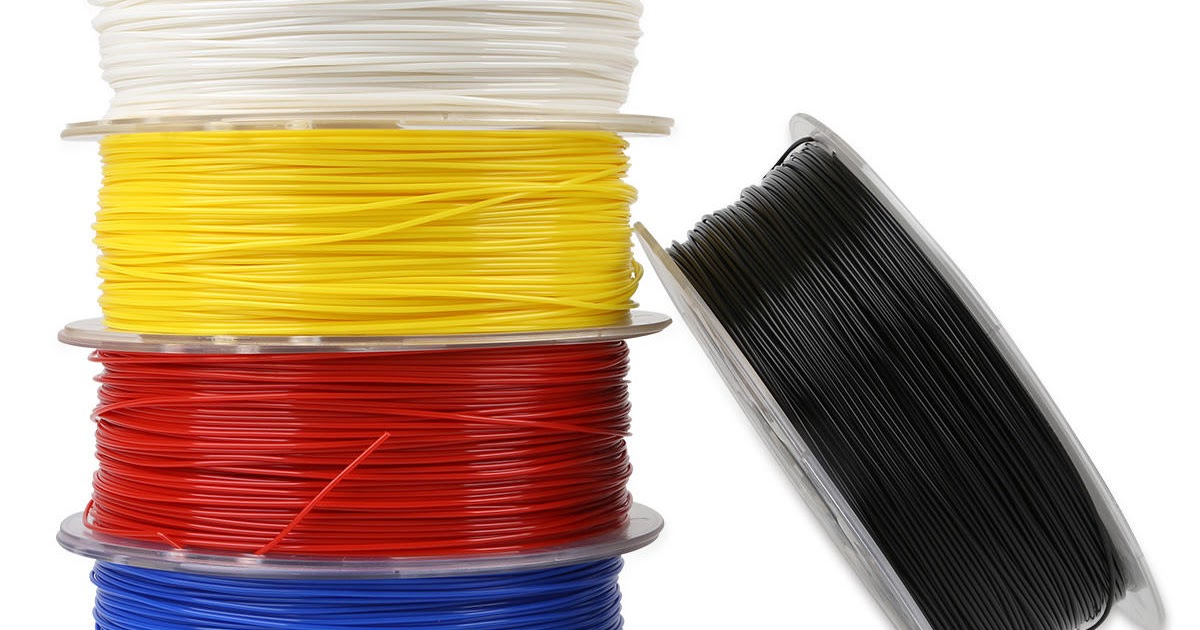How much plastic does a 3d printer use
3 ways to estimate how much filament you will need for 3D printing
The question of how much filament to keep on-hand is one that bugs every FDM 3D printer user at one point or another. Most of us usually just limit our prints to how much filament we have. Or we reschedule any bigger project based on when we would buy a new spool.
There is a better way to go about this though. And that is what we will discuss here today.
While both weight and length are useful ways to gauge filament consumption, the simple fact that 99% of filament purchases are in terms of weight of the filament means that it is a better ballpark to use when estimating 3D printer filament usage.
Most slicers automatically calculate an estimated weight of the 3D print on the basis of the type of material (PLA, ABS, HIPS, PETG etc.) upon slicing an STL file into G-Code. Look for “sliced information” or some similar information dialog within the slicer.
For simplicity, we’ll be talking about the weight of 3D prints in PLA. If you use another type of filament as a daily driver, then simply adjust the weights given in this article according to the difference in density between your type of filament with the density of PLA.
By “general use” we mean 3D printing parts, tools and thingamabobs every now and again, but not too often, nor on a daily basis. Basically, anything short of a full-blown project.
In this case, most 3D prints would not exceed 50 grams of filament (PLA). You can easily get away with keeping 2 or 3 spools of 1KG filament on-hand. If you use a 3D printer capable of printing with 2 or 3 filaments at the same time, then your requirement would also increase accordingly.
At the very least, every user should have 1 spare spool – recommended to be a neutral color – as a fail-safe reserve.
If you routinely take up entire 3D printing projects, then you would go through filament much quicker than the general user. You would also probably need different materials or at least different colors on-hand to ease out your post-processing.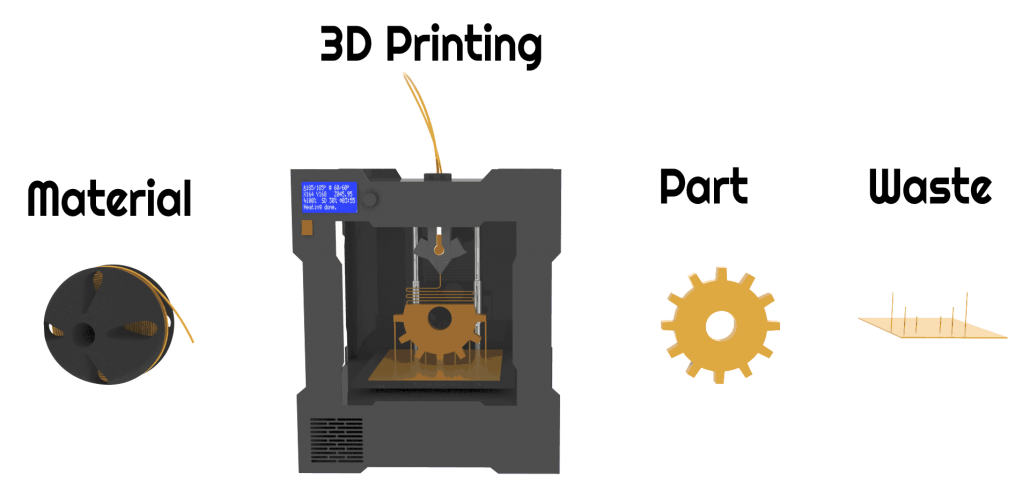
In this case, it is much better to stock your filaments on the basis of your running project needs.
But how exactly does one go about accounting for all the filament that a particular project would use? If you had a final STL file ready to go, then of course you could simply slice it to find out the estimated weight of the filament.
Speaking for the broad majority of tinkerers and 3D printing enthusiasts, however, reaching a final STL file isn’t something that one does on the first day of the project and is only near the final stretch that the STL is also set in stone. Of course, the answer to this problem is, we estimate!
Estimate based on prior experienceOne of the easiest ways to go about estimating the amount of filament you would need is to compare it to previous projects already completed.
For example, your current project requires you to 3D print a hexagonal container of some sort. By prior experience you know that a similar sized round container would use up 76 grams of PLA filament when printed with 20% infill.
Now a hexagon has more defined edges than a round container and perhaps you’d like to use 40% infill to make it extra sturdy, so as a rough estimate we increase the expected weight of the hexagonal container by 20% and add an extra 5% to account for the difference in shape.
Increasing the 76 grams by a total of 25%, we’d get a ball-park estimate of around 95 grams. Since this 95-grams is estimated from the consumed material of the prior project, this method has the added advantage of accounting for things such as failed prints, support structures, varying levels of in-fill as well.
Approximation (order of magnitude estimation)The more mathematically inclined readers would be familiar with this concept named after famed physicist Enrico Fermi.
A fermi approximation only considers the order of magnitude or for our purposes, weight in grams rounded to 1, 10, 100 and so on to reach a close enough estimate of the weight of the filament.
Say, for example you want to 3D print a cosplay helmet for your own head size, but are unsure exactly how much filament it would take. A good starting point would be to consider the size of the helmet in comparison to say a 10 cm3 3D printed cube at 100% in-fill with PLA.
A good starting point would be to consider the size of the helmet in comparison to say a 10 cm3 3D printed cube at 100% in-fill with PLA.
Surely the helmet would not be only 10 cm3 or 100 cm3, and it cannot possibly be a 1000 (10,000 cm3) times the size of the cube as well. So as the only reasonable selection, we will say that the helmet would be around 100 times the size of the cube.
Since the density of PLA is 1.25 grams per cubic centimeter, our 100% in-fill cube would weigh exactly 12.5 grams. So, our helmet at an order of magnitude of 100 times more should be around the ballpark of 1250 grams at 100% in-fill. If we are printing at 20% in-fill, then it would reduce that weight to 250 grams.
Now you may be thinking; “surely such a simple guess couldn’t be accurate?”. And you’d be right. But as an estimate goes, the Fermi approximation is a great way to reach an accuracy of within one order of magnitude or one power of 10 of the actual answer.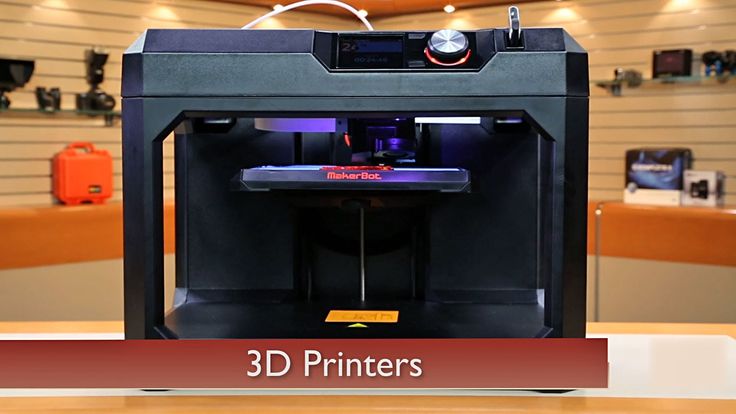 So, the actual helmet could only be 100 grams, or it could be 400 grams, but you can be sure that you wouldn’t needmore than one 1 kg spool of filament for it. And that is what we needed to estimate: How many spools of filament you would need for the project.
So, the actual helmet could only be 100 grams, or it could be 400 grams, but you can be sure that you wouldn’t needmore than one 1 kg spool of filament for it. And that is what we needed to estimate: How many spools of filament you would need for the project.
As a pro-tip, we would recommend you steer clear of using a geometric volume as fine way to calculate weight of the 3D print.
Firstly, most 3D prints are of a unique shape and unless you are brilliant at math, their volumes would need to be estimated by simplifying the design to Minecraft-style cuboids.
You are already uncertain of the final details of the 3D print, so you’d be making multiple guesses as to the volume of the resultant cuboids. This increases the uncertainty as the complexity of the 3D print increases.
Secondly, a volumetric approach usually would fail to account for the support structures, failed prints and other technical losses that you may face, so more often than not, you would wind up under-estimating your project requirements.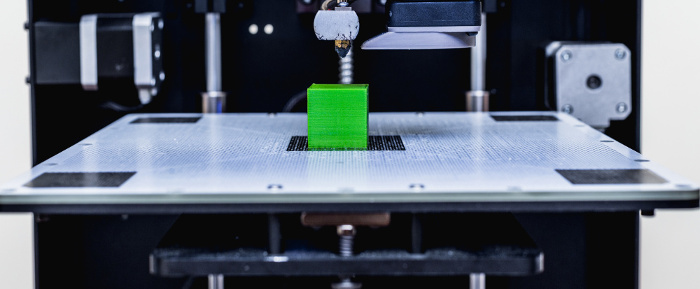
Lastly, it is human nature to make conservative guesses when faced with the unknown. In terms of estimating the required filament, this would invariably mean that the person guessing the volumes of the various parts would also under-estimate.
Since not running out of filament for the duration of the project is the entire goal of the estimation, the end-result of the geometric volume approach is time spent doing nothing worthwhile in most cases. However doing so may give a better estimate on how many spools of filament to inventory over time.
Since 3D printing is an additive manufacturing process there is very limited material waste involved. With a 1 KG spool of filament, you would probably 3D print ~990 grams or so of the material.
Factors that affect this of course, is the quality of the filament. If the filament keeps breaking or keeps getting jammed, this would reduce the effective amount of filament you could 3D print with.
The other factor is the age and degradation of the 3D printer itself which would lead to increased jams, more failed prints, and more process loss at the hot end.
The biggest contributor to wasted filaments is not the hardware nor the filament, but complex 3D print design, improper filament storage or incorrect 3D printer settings is what lead to excessive waste of material.
Support structures are arguably the bigger contributors to willful wastage of materials when it comes to complex 3D prints. Support structures can be avoided by either breaking the complex design into multiple simpler units and then attaching them in post-processing, or by incorporating the support structure into the 3D print itself; grids, interlocks, beams and scaffoldings have been a part of architecture for centuries, so consider incorporating one or more of them in your next project.
Improper filament storage is perhaps one of the biggest reasons that leads newcomers to have to buy new spools frequently. Remember, proper storage of 3D printer filaments is somewhere dry, away from sunlight, properly spooled (not tangled), and preferably in an airtight container.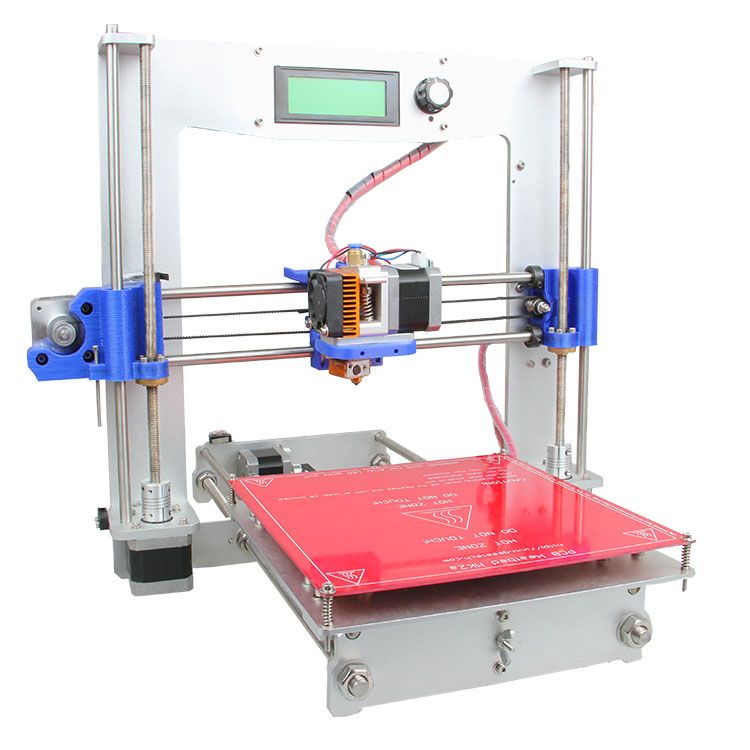
Failed prints are another major culprit that waste precious filament. The best way to minimize the risk of failed prints is to learn about your material and the optimal 3D printer settings with a few test prints before doing any actual 3D printing. Learning from others’ mistakes is the best way to avoid making those same mistakes yourself.
Tags: 3D printingFilamentMaterialsPLA
How Long Does a 1KG Roll of 3D Printer Filament Last? – 3D Printerly
I’ve been 3D printing this same roll of 1KG PLA for a while now and I was thinking to myself, just how long does a 1KG roll of 3D printer filament last? There are clearly going to be differences from person to person, but I set out to find out some average expectations.
The average 1KG spool of filament lasts users just over a month before it needs replacing. People who 3D print on a daily basis and create larger models could use 1KG of filament in a week or so. Someone who 3D prints a few small objects from time to time could stretch a 1KG roll of filament for two months and more.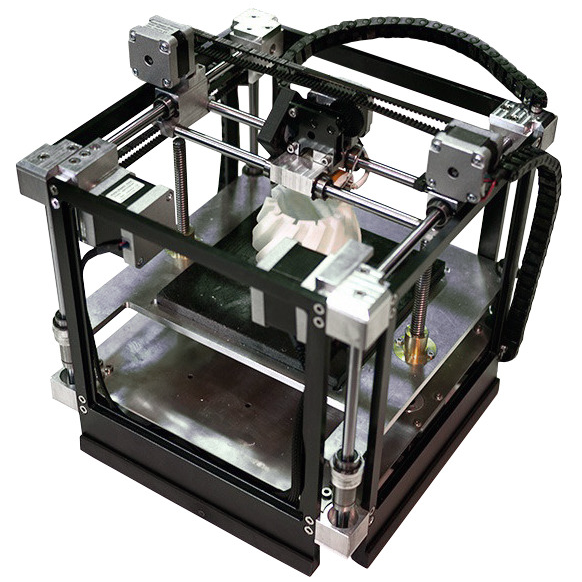
There’s some more information below which is relevant to answering this question such as the amount of common objects you can print and how to make your filament last longer. Keep reading to find out!
If you are interested in seeing some of the best tools and accessories for your 3D printers, you can find them easily by clicking here (Amazon).
How Long Does a 1KG Roll of Filament Last?
This question is quite similar to asking someone ‘how long is a piece of string?’ If you have a long list of items that you have been wanting to print and they are of a bigger size, infill percentage and you want large layers, you can go through a 1KG roll pretty quickly.
The timing for how long a roll of filament will last really depends on how often you are printing and what you are printing. Some will tell you a roll of filament lasts them a few days, others will tell you one 1KG roll lasts them a few months.
Some big projects such as costumes and props can easily use over 10KG of filament, so 1KG of filament won’t last you barely any time at all.
If you have one big print, you could technically use up a whole 1KG roll of filament in just one day, with a big nozzle such as a 1mm nozzle.
It depends on your flow rates and the models you are printing. Your slicer software will show you exactly how many grams of filament it will take to complete.
The piece below is almost 500g and lasts around 45 hours of printing.
When the same piece has the nozzle size changed from 0.4mm to 1mm, we see a drastic change in the amount of printing hours to just under 17 hours. This is around a 60% decrease in the printing hours and the filament used even increases from 497g to 627g.
You could easily add settings which use tons more filament in less time, so it’s really about your flow rates out of the nozzle.
If you are a low volume printer and like to print smaller items, a spool of filament can easily last you a month or two.
A high volume printer on the other hand, who likes to print bigger objects will go through that same filament in a few weeks or so.
A lot of people are involved in the D&D (Dungeons and Dragons) game, which are primarily made up of miniatures, terrain and props. For each print, it can easily take around 1-3% of your 1KG spool of filament.
One 3D printer user described that in 5,000 hours of printing in the past year, they had gone through 30KG of filament with near constant printing. Based on those numbers, that is 166 printing hours for every KG of filament.
This would measure up to about 2 and a half 1 KG rolls per month. It is a professional field that they are in so it their large filament consumption makes sense.
Using a bigger 3D printer like an Artillery Sidewinder X1 V4 (Review) compared to a Prusa Mini (Review) is going to make a big difference in how much filament you use. When you are limited in your build volume, you have no choice but to print smaller items.
A 3D printer with a large build volume leaves more room for ambitious, larger projects and prints.
How Many Things Can I Print with 1KG Spool of Filament?
For a rough picture on what it can print, you would be able to print somewhere between 90 calibration cubes with 100% infill or 335 calibration cubes with just 5% infill.
Some extra perspective, you could print around 400 average sized chess pieces with a 1KG spool of filament.
If you measure how long your 3D printer filament lasts in printing hours, I’d say on average you could get around 50 printing hours.
The best way to determine this would be to download some slicer software such as Cura and open a few models that you can see yourself printing. It will give you direct estimates for how much filament will be used.
This chess piece below in particular uses 8 grams of filament and takes 1 hour and 26 minutes to print. That means my 1KG spool of filament would last me 125 of these pawns before it ran out.
Another take away is that 1 hour and 26 minutes of printing, 125 times would give me 180 printing hours.
This was at a speed of 50mm/s and increasing it to 60mm/s changed the time from 1 hour 26 minutes to 1 hour 21 minutes which translates to 169 printing hours.
As you can see, a fairly small change can decrease 11 printing hours, technically making your 3D printer filament last less time but still printing the same amount.
The goal here is not about increasing or decreasing printing hours, but being able to print out more objects for the same amount of filament.
The average for a miniature is less than 10 grams per mini so you could print over 100 minis before your 1KG spool of filament will run out.
You could also technically account for prints that fail, since there’s always potential for that to happen and be of no use to you. If you’re lucky most of your failed prints happen at the initial first layers, but some prints can go wrong a few hours in!
Check out my post on Great Ways to Stop 3D Prints Moving While Printing, so your prints fail a lot less!
How Do I Make My 3D Printer Filament Last Longer?
The best way to make your rolls of filament last longer is to slice your objects in such a way that it uses less plastic. There are several ways to cut down on plastic production which over time can save you a substantial amount of filament.
There are several ways to cut down on plastic production which over time can save you a substantial amount of filament.
Many factors affect how long a roll of filament lasts, such as the size of your prints, infill density %, use of supports and so on. As you’ll realize, a 3D printed part such as a vase or pot uses very small amounts of filament because the infill is non-existent.
Play around with the settings to lower your filament usage per print to make your filament last longer, it will take some trial and error to really get good at this.
Find Ways to Reduce Support Material
Support material is widely used in 3D printing but models can be designed in such a way where it doesn’t require support.
You can also make use of 3D printing software to efficiently reduce support material. You can create custom supports in a software called Meshmixer, the video below by Josef Prusa goes into some nice detail.
I found out about this awesome feature by researching the Best Free 3D Printing Software, which is an epic list of slicers, CAD software and more.
Reduce Unnecessary Skirts, Brims & Rafts
Most 3D printer users will use a skirt before each print, and this makes a lot of sense so you can prime your nozzle before printing. You can remove the number of skirts you set if you do more than 2, even one can be enough a lot of the time.
If you don’t already know, skirts are the extrusion of material around your print before it gets to printing the actual model, though skirts use such a tiny amount of filament it doesn’t matter.
Brims and rafts, on the other hand, can usually be reduced or removed altogether in many cases, as they do use up more filament. They can be very useful for certain prints, so balance out the savings with the benefits carefully.
If you can figure out where you can remove them, you can save a lot of filament in the long run and a nice amount for each 1KG roll of filament.
Make Better Use of Infill Settings
There’s a massive trade-off in using high infill percentages versus 0% infill and it will allow your filament to go a long way.
Most slicers will default to an infill of 20% but many times you’ll be fine with 10-15% or even 0% in some cases. More infill doesn’t always mean more strength, and when you get to very high infill settings, they can even start to become counterproductive and unnecessary.
I printed a 3D model of Deadpool with just 5% infill using the Cubic pattern, and it’s pretty darn strong!
Infill patterns can definitely save you filament, the honeycomb, hexagon, or cubic patterns are usually good picks to do this. The fastest infills to print are going to be the ones that use the least material and the hexagon infill is a great example.
You’ll not only save material and time, but it’s a strong infill pattern.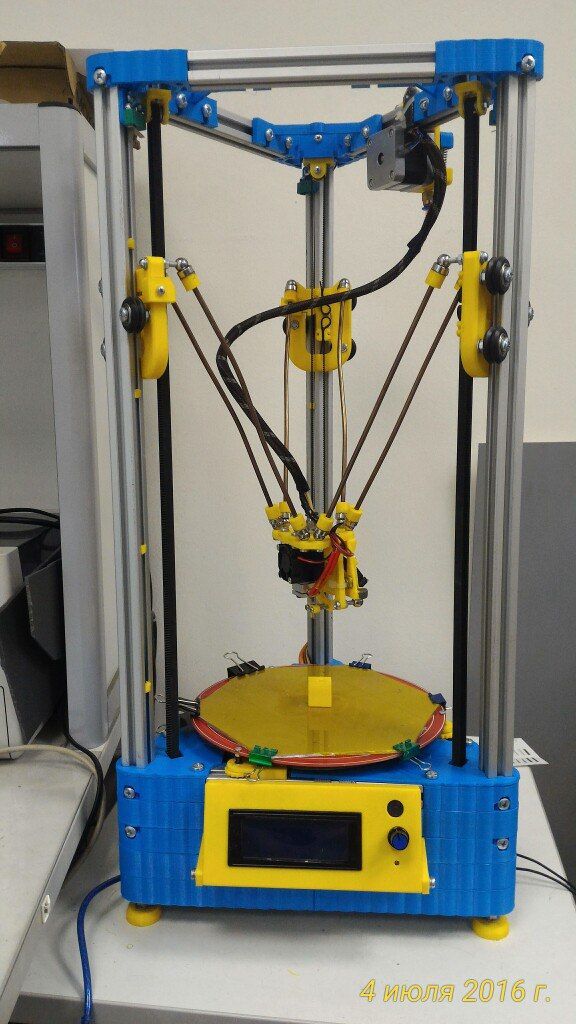 The honeycomb pattern is widely used in nature, main example being the honey bee.
The honeycomb pattern is widely used in nature, main example being the honey bee.
The fastest infill pattern is probably the Lines or Zig Zag and are great for prototypes, figurines or models.
Print Smaller Objects or Less Often
This is an obvious way to make your 3D printer filament last longer. Simply scale your objects down if they are non-functional prints and don’t necessarily need a larger size.
I understand wanting larger objects but you have to understand there will be a trade-off, so keep that in mind.
For example, if you only print items that use up 10g of filament at a time and you print twice a week, a 1KG roll of filament would last you 50 weeks (1,000 grams of filament/20g per week).
On the other hand, if you’re into projects that use up 50g of filament at a time and you print every day, that same filament is going to last you just 20 days (1000g of filament/50g per day).
Another simple way to make filament last longer is to print less often.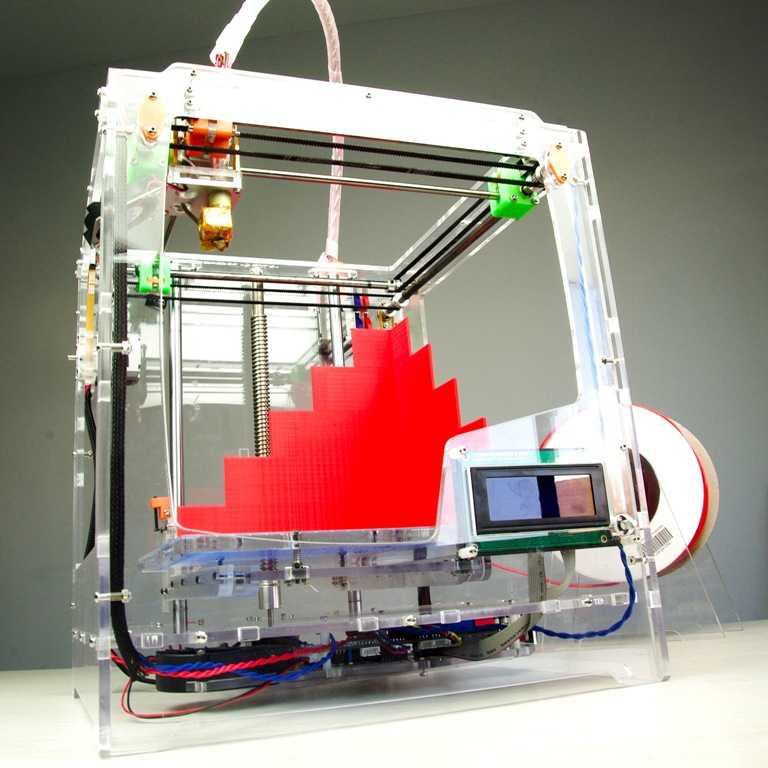 If you print a lot of non-functional items or a bunch of items that collect dust (we’ve all been guilty of this) maybe dial it down a bit if you really want to make your filament roll to go a long way.
If you print a lot of non-functional items or a bunch of items that collect dust (we’ve all been guilty of this) maybe dial it down a bit if you really want to make your filament roll to go a long way.
Imagine over one-year span, you managed to save 10% of filament using certain techniques, if you use 1KG of filament per month and so 12KG of filament per year, a 10% saving would be just over a whole roll of filament, at 1.2KG.
You might think there are drawbacks of doing this such as making weaker parts, but if you use proper methods you can actually strengthen parts as well as save filament and printing time.
How Much Filament Do You Need for a Print?
How Long in Meters/Feet) is a 1KG Roll of Filament?
According to Rigid Ink, based on PLA having a density of 1.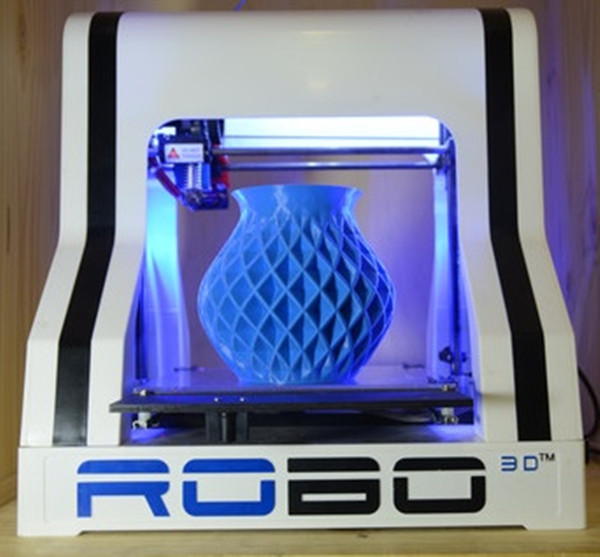 25g/ml a 1KG spool of PLA would measure up at around 335 meters for 1.75mm filament and 125 meters for 2.85mm filament. In feet, 335 meters is 1,099 feet.
25g/ml a 1KG spool of PLA would measure up at around 335 meters for 1.75mm filament and 125 meters for 2.85mm filament. In feet, 335 meters is 1,099 feet.
If you wanted to put in a cost per meter of PLA filament, we have to assume a specific price which I can say on average is around $25.
PLA would cost 7.5 cents per meter for 1.75mm and 20 cents per meter for 2.85mm.
If you love great quality 3D prints, you’ll love the AMX3d Pro Grade 3D Printer Tool Kit from Amazon. It is a staple set of 3D printing tools that gives you everything you need to remove, clean & finish your 3D prints.
It gives you the ability to:
- Easily clean your 3D prints – 25-piece kit with 13 knife blades and 3 handles, long tweezers, needle nose pliers, and glue stick.
- Simply remove 3D prints – stop damaging your 3D prints by using one of the 3 specialized removal tools.
- Perfectly finish your 3D prints – the 3-piece, 6-tool precision scraper/pick/knife blade combo can get into small crevices to get a great finish.

- Become a 3D printing pro!
9 Projects 3D Printing From Plastic Waste
Plastic waste, which not so long ago went straight to landfill, is increasingly being recycled, not least 3D printers.
By using post-consumer plastic as a raw material for 3D printing, corporations, small businesses and even individuals can create new products with real value while removing plastic waste from the environment. Let's figure out what is created from plastic waste using a 3D printer and who does it.
How to prepare material for 3D printing from plastic waste
The process of making useful products from local plastic waste using 3D printing is quite simple. Known as distributed recycling and additive manufacturing, or DRAM for short, it involves the following steps:
• Plastic waste collection.
• Waste sorting and cleaning.
• Shredding waste into plastic pieces.
• Extruding 3D printing filament from plastic shred with an extruder.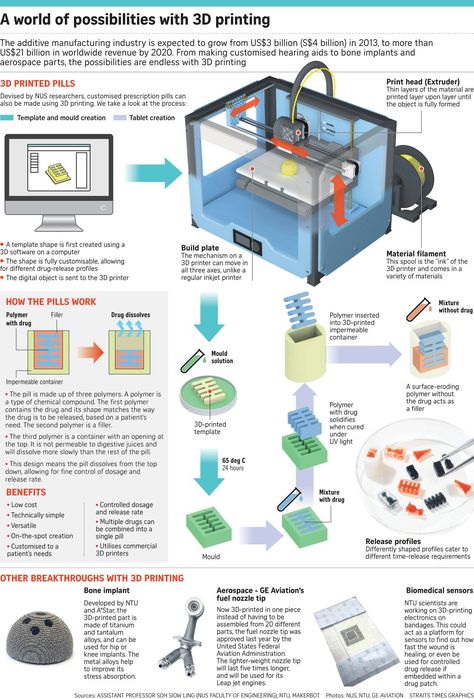
• Product printing.
Video: thenewraw.org
Thread made in this way retains almost all the same qualities as pure plastic, but is much cheaper. According to a study by Aubrey L. Verne (et al.) of Michigan Technological University, a 3D printer can print objects at a cost 1,000 times less than if commercial polymer fibers were used.
There are different types of shredders, extruders and 3D printers on the market today, both in terms of cost and complexity of the tasks performed.
For example, for home use, manufacturers have long used a simple blender or grinder to grind up 3D print stock and failed prints, but this is not a long-term or high-volume solution.
More and more 3D printers can print with raw shredded plastic or bulky plastic pellets instead of filament. This simplifies the process and reduces energy consumption.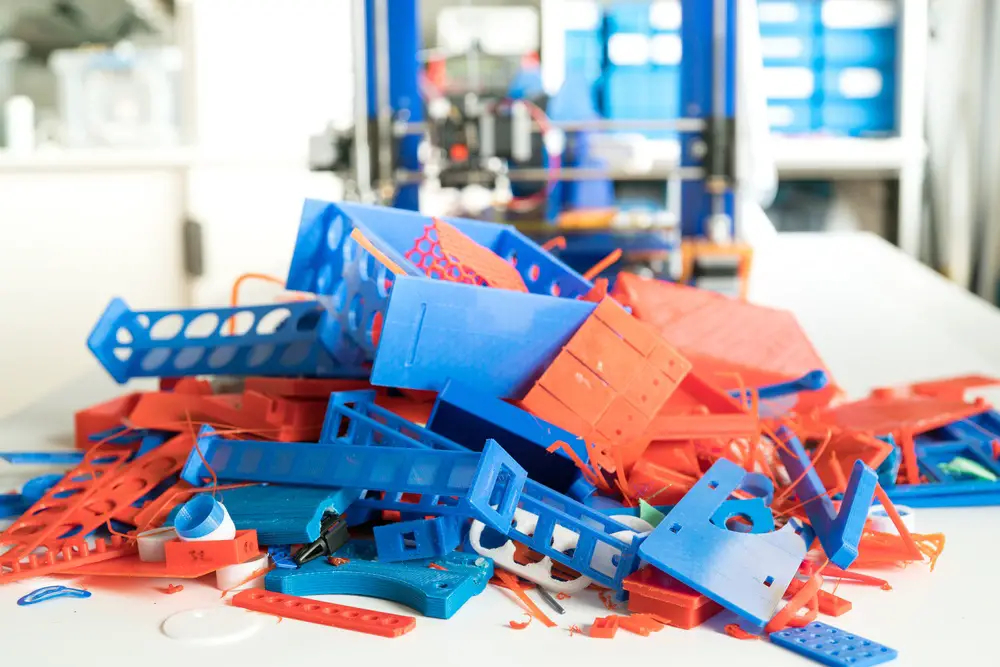 The cost of a simple 3D printer can be $2,000, and a complex industrial one can cost more than $150,000.
The cost of a simple 3D printer can be $2,000, and a complex industrial one can cost more than $150,000.
Introducing 9 successful projects that prove that 3D printing from household plastic waste is a viable solution for removing plastic from the environment, while also making a difference.
Plastic Bottle Olympic Podiums
Unbeknownst to everyone, recycled plastic has taken center stage at the Tokyo 2020 Olympics. Each of the 98 podiums where medals were presented to Olympic winners was 3D printed from waste plastic.
Catwalk material has been collected by Japanese citizens over the past two years through a program sponsored by consumer goods giant Proctor & Gamble. More than 2,000 bins have been set up across the country to collect empty drink bottles, shampoo containers and other plastic waste. Plastic waste has also been fished out of the seas surrounding Japan.
After the games, some of the podium plastic will be used to educate the public about sustainability, and much of it will be recycled back into packaging for P&G products.
Plastic waste bins
Screenshot: 3D printed waste bin by Justina Zdanovichute, in collaboration with R3direct.
(Source: Justyna Zdanovichute/CC BY-NC-ND 4.0)
How about collecting plastic waste in trash cans made from the same waste? Italian design company R3direct makes them and more using 3D printing. The company has one stated goal: to design and 3D print products from plastic waste. R3direct's product list grows longer every year, from artwork made from local plastic waste to practical urban furniture.
R3direct states that their printing technology can use plastic pellets immediately after grinding, skipping the filament extrusion step. This allows them to further reduce their energy consumption and CO2 emissions with 3D printed furniture made from waste plastic.
Trendy Fishnet Seats
Photo: facebook/@bluecycle use of marine plastic waste from shipping and fishing.
New Raw has also teamed up with The Coca-Cola Company for the Zero Waste Future program in Thessaloniki, Greece. Consumers will bring their plastic waste to the Zero Waste Lab, which has a plastic recycling facility and a robotic arm, to create custom-made modern furniture.
One of the partnership's furniture series is called Elements and includes a solarium, walk-in closet and walkway made from recycled marine plastic waste. There's no better way to showcase the potential of recycling plastic waste than to let people enjoy a clean beach while lying on a lounge chair made from what used to pollute the water.
New Raw is launching a Print Your City program in several neighborhoods that allows local residents to recycle their plastic waste through a robotic 3D printing process that can turn sorted plastic into outdoor furniture.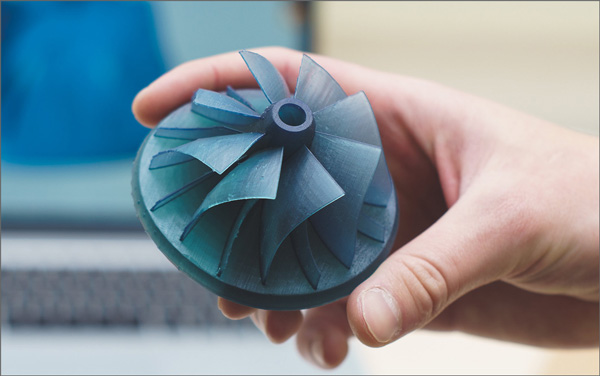
Music festival waste sunglasses frames
Photo: instagram/@yuma.labs.circular closed loop models.
Yuma Labs uses both powder pad 3D printing and injection molding to make their sunglasses. The raw materials are recycled soda bottles and bio-based nylon. In the future, the frames of sunglasses can be completely recycled.
Yuma Labs partners with companies, cities and events such as the Tomorrowland Music Festival to collect the plastic waste generated at the event. And the sale of sunglasses, then printed on a 3D printer from this garbage, covers the cost of collecting plastic.
Yuma Labs also organizes and participates in community events to raise awareness about recycling. For example, in 2019 they organized an event at the Stormkop playground in Antwerp where children had to pull plastic trash from a nearby river. The company then 3D-printed it into children's sunglasses.
As Yuma Labs says, it's not just the production of sunglasses or the recycling of plastic that matters. They hope to inspire others with their example for a broader transition to a circular economy.
They hope to inspire others with their example for a broader transition to a circular economy.
Plastic Waste Urban Lightweight Vehicle
Utility Vehicle (ZUV) is an electric trike with a 3D printed frame made from recycled polypropylene plastic.
Developed by Austrian design firm EOOS and Dutch 3D printing company The New Raw, ZUV aims to do more than reduce plastic waste. Its creators hope it can become the new type of zero-emission vehicle for cities around the world.
According to the developer's plans, consumers can 3D print the ZUV's polypropylene frame using a 3D printing service such as Craft Cloud and then take it to a bike shop to have the motor, wheels, lights and handlebars installed.
The square ZUV has a rear wheel drive and a spacious trunk. It can be ridden by two adults. EOOS hopes to raise awareness of the environmental impact of urban transport and offer an alternative mode of transportation based on a circular economy. 9The 0003
9The 0003
ZUV is currently only in the prototype stage and its blocky look may not be to everyone's liking. However, the concept is promising, and the car has every chance of becoming an ordinary city landmark.
Coffee station made from coffee waste
Photo: lofbergs-com.mynewsdesk.com
Swedish coffee group Löfbergs is partnering with 3D printing company Sculptur to turn coffee waste into new coffee stations. The collaboration is part of Circular Coffee Community's commitment and the group's goal of zero coffee waste by 2030. The world's first 3D printed waste-based coffee station is already up and running and others are underway.
The coffee stations are 3D printed from a by-product of the coffee roasting process and polypropylene. Further development will allow the use of polypropylene from recycled coffee big bags, making coffee stations almost 100% renewable.
“Our new coffee station is a prime example of a closed loop—recycling leftovers from our own primary raw material, coffee, to create an entirely new and associated sustainable product.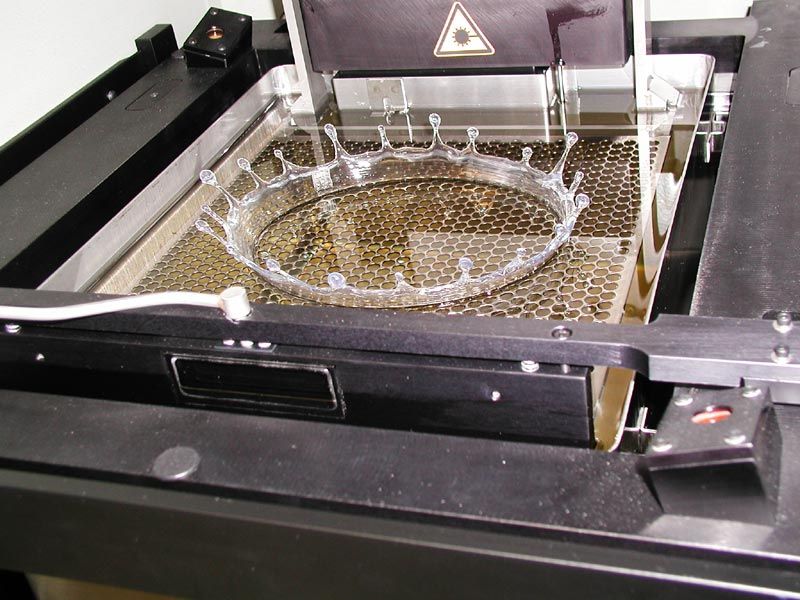 ” , says Lars Aen Tegersen, Director of Innovation and Circular Transformation at Löfbergs.
” , says Lars Aen Tegersen, Director of Innovation and Circular Transformation at Löfbergs.
Cozy office space made from plastic bottles
Photo: instagram/@architechcompany interiors.
Modular circular workspace printed from recycled PET (supplied by the Port of Rotterdam) using a CFAM printer and reinforced with fiberglass. The convenient and strong workplace easily disassembles and moves. The round shape ensures pleasant acoustics of the workspace, it is equipped with ventilation, heating, electricity and LED lighting.
Beautiful objects made from garbage
Photo: instagram/@therogerie
Canadian company The Rogerie is working to remove waste from the environment, with the help of small suppliers who remove it from landfills and oceans, and create from this waste beautiful, useful items.
The Rogerie's 3D printed product catalog includes mugs, bathroom accessories, teapots and a wide selection of flower pots, among others.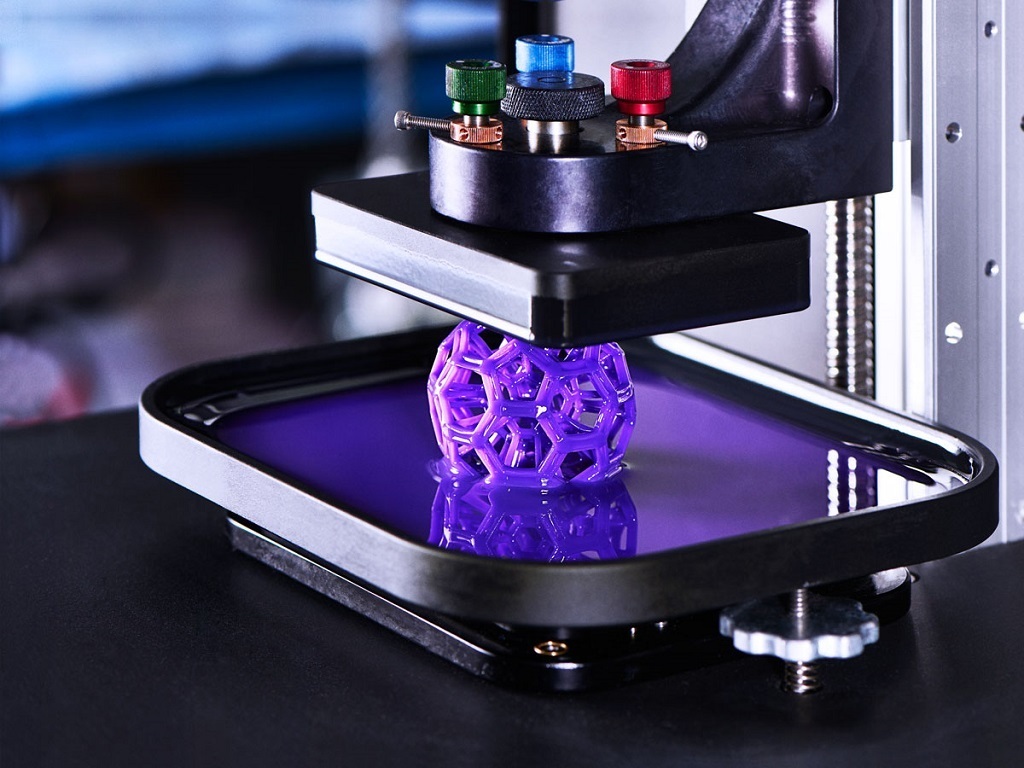 Customers love these products - by purchasing them they are contributing to the removal of plastic waste from the environment.
Customers love these products - by purchasing them they are contributing to the removal of plastic waste from the environment.
The company's founders say they are constantly looking for new waste streams and also have their own recycling program. They are willing to use anything from old TVs to food packaging and car parts.
Coffee stirrer chandeliers
Photo: instagram/@utilizestudios
The Utilize project turned used coffee stirrers into chandeliers, soft plastic items into wicker baskets, and fishing tackle into chairs. And all this with the help of an oven and a desktop 3D printer from Ultimaker.
Utilize is more than a design studio, it specializes in helping companies transition to a circular economy and build sustainable products. They aim to help businesses reduce, reuse and recycle waste through 3D printing.
“The biggest surprise was how many types of waste we can use – soft plastics, organics, polypropylenes and polyethylenes – we kind of asked, why isn’t everyone doing this?” , said Utilize Project founder Matthew O'Hagan in an interview with Stuff magazine. - "Why isn't this being done?" .
- "Why isn't this being done?" .
Based on: all3dp.com
3D printing plastic recycling, PET.
Reviews
Follow author
Follow
Don't want
15
The article refers to Re-fill (recycled PET plastic for 3D printing).
This time we're looking at converting plastic into 3D printing filament.
Recycling is not as easy as it sounds, and many companies have tried before and now to start using recycled filament for their 3D printers. Anyone who has tried to make their own filament on a small scale will understand how difficult it is, even with the newer plastic pellets.
Last year I was very lucky: I got 3DFilaprint and it was a big recycling project, it taught me that making quality filament is very, very difficult.
I produced several batches of recycled ABS for a local shop. I have even tried to recycle some polypropylene and PET, with limited success.
Of course, the easiest way is to use ready-made PET, PLA and WoodFill granules. Making my own colored WoodFill yarn was a lot of fun and exciting. Doing it professionally - for your home 3d printer, to make it from plastic scrap, having previously cleaned it, melted it and squeezed it out, is not at all an easy task.
I posted this photo of the failed print above - the print failed due to a mechanical printer error - it's not the fault of the bad filament.
I was very happy to win a Refil PET reel. It contains up to 90% recycled plastic bottles. The team has been working on this plastic for the last 3 years. How much you get is 750 grams of thread, while the total weight including packaging is about 900 grams. What it looks like -
I had a full roll of clear PET and a sample of black ABS filament, which is made from recycled car panels. PET is indeed very transparent. It's so transparent, in fact, that I'm even a little concerned that it's really recycled material and not new. I was expecting bubbles and maybe even a few slight color casts or a slight opacity.
I was expecting bubbles and maybe even a few slight color casts or a slight opacity.
PET plastic bottles and recycling symbol.
The most important aspect is dimensional accuracy. My spool was 1.75mm and I'm more picky about it than 2.85mm thread. I measured about 50 times at the beginning, middle and end. The whole spool was 1.76mm - almost negligible deviation. How do they print? I started printing at a normal PET temperature of 230 degrees C and printed a simple single layer vase for optical clarity testing.
Singvers classic bottle.
Printed in actual size - for comparison - glass on the left, PET on the middle and white PLA on the right. It was once a PET bottle, and now, after being recycled and 3D printed, it's a PET bottle again :) But printing at 230 is not very good for this particular type of PET material -
Bubbles as far as I can tell not moisture content. Lowering the print temperature corrects this issue.
You won't get sharp prints even with good PET, the layering process causes a slightly translucent final print.
I love all types of PET and use Taulman t-glass and ColorfabbXT regularly. In the image above, you can see the same print with these different PET materials.
You can print whatever you want with PET, although it will be very slow.
Follow author
Follow
Don't want
15
More interesting articles
Prim3d
Loading
11.09.2022
887
eight
Follow author
Follow
Don't want
Hi all!
Anycubic 4max DUAL printer arrived for maintenance.






